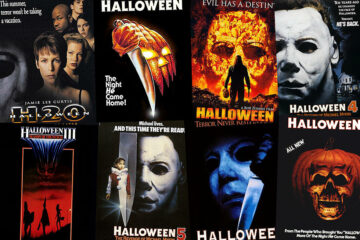These are the Spicy Differences Between the Two Dune Movies

image from Screen Rant
I have never read Dune. But as a fan of David Lynch and sci-fi, I have seen the original film enough to be excited about Denis Villeneuve’s remake. Dune’s famously complex plot comes with the names of so many planets, politicians, prophecies, civilizations and nobles that it makes Westeros politics look simple. The two films have very different ways of unraveling the story and the distinction could be described as show vs. tell. Villeneuve’s Dune shows you the narrative while Lynch’s Dune tells it to you.
Whether it is the original all white cast or the new diverse cast, you can’t avoid the male white savior narrative in Dune. It’s about a native population fending off colonizers, and one of those colonizers is destined to lead the natives to victory. It is a story we have seen before, James Cameron’s Avatar especially comes to mind because of the mining of resources and the dreaded beast to be tamed. The new film does little to change this aspect of the source material and it’s sad that one of the most significant science fiction stories incorporates such a banal theme.
The first ill-fated production of the new Dune was to be directed by visionary director, Alejandro Jodorowsy. The 2013 documentary, Jodorowsky’s Dune, displays the phenomenal talent involved in the original project, including the iconic comic book artist Moebius, who did designs and storyboards. After Jodorowsky’s production fell through, David Lynch was tapped to direct and you can see the connection as both were known for their surreal arthouse style. Still, Jodorowsky and Moebius’ influence feels present in Lynch’s bold use of colors and lavish costumes, as well as Villeneuve’s long sweeping views of futuristic cityscapes and tableau-like shots.
Dune (1984) was a troubled production and has had a few edits over the years, which Lynch renounced. It feels like a compromised version of a story that can easily confuse audiences. The intricate political scheme is told to the audience at the very beginning, but you can get lost trying to process all of the names and plots. By the time those storylines unfold, it is easy to forget who was talking about whom in that opening information dump. Even with cheap ways of delivering information, like excessive voiceover and inner monologue, it takes some brain work to wrap your head around the story. Then, it completely relies on voiceover to rush through the epic climax in one of the clunkiest third acts of any mainstream blockbuster.
But this version is not without its merits as the sheer scope of the production design is awe inspiring. One of the hallmarks of Lynch’s filmmaking is intense and unusual choices, and his eccentric flair helps create the mystical nature of Dune when dealing with space witches or a floating creature in a tank. Off the wall performances, like Kenneth McMillan’s Baron, create a campy and manic tone that the movie revels in. And haunting (but also kind of funny?) choices, like Alicia Witt’s Alia, reinforce the magical and volatile universe Lynch has created. But the film suffers from this unique directorial style in moments that are supposed to be relatable, which is tough when the story is pretty unrelatable because it’s about space nobles. Still, with the ambitious stylization, this Dune universe is singular and could only come from David Lynch’s imagination.
Breathtaking opulence and design is one thing that both films have in common. Villeneuve’s Dune is also lush with fantastic sets and costumes (the cape-ography is really extraordinary). The color palette of the film is so rich and honestly shades of beige never looked so good! The layers of tan bring the sand to life and the pops of faded rose and gold inform the harsh and weathered setting. Villeneuve lets the audience linger on atmospheric moments of endless desert or palatial architecture, all of which are gorgeous to rest your eyes on. In taking its time, the film guides the audience through the plot in a much more digestible way. Whereas Lynch’s film opens with laying out the narrative, the remake tells Paul’s story to the audience as it happens. When the Atreides family arrives on desert planet Arrakis, you feel the shift in tone. The audience learns of sabotage at the same time as the Duke and you don’t have to remember a bunch of details from the beginning in order to keep up. Like Lynch’s version, this film uses some voice overs and narration for exposition, but Dune is a hard story to translate to film and I think Villeneuve does a commendable job. It takes the same plot, which seems so confounding in Lynch’s film, and manages to parse it out in a digestible way. The universe still feels vast, full of magic, ceremony and spirituality, but it doesn’t leave you in the dust to put the narrative together. Villeneuve’s film really feels like it is doing the story justice in a contemporary and serious style.
Lynch’s Dune is a campy, chaotic and grandiose vision that is the blockbuster spectacle you could expect from the director of Eraserhead and Wild at Heart. Villeneuve’s Dune is an earnest and somber telling of the story that allows itself breathing room to create the ethereal and alien tone. I’m excited to see more of this epic story brought to film, it has all the potential to be the next Star Wars or Lord of the Rings. But it also has the potential to be the next Wonder Woman 1984. Luckily, with Villeneuve directing, I don’t see it going that way.
–
Land Acknowledgement: this was written on Ohlone Territory.









